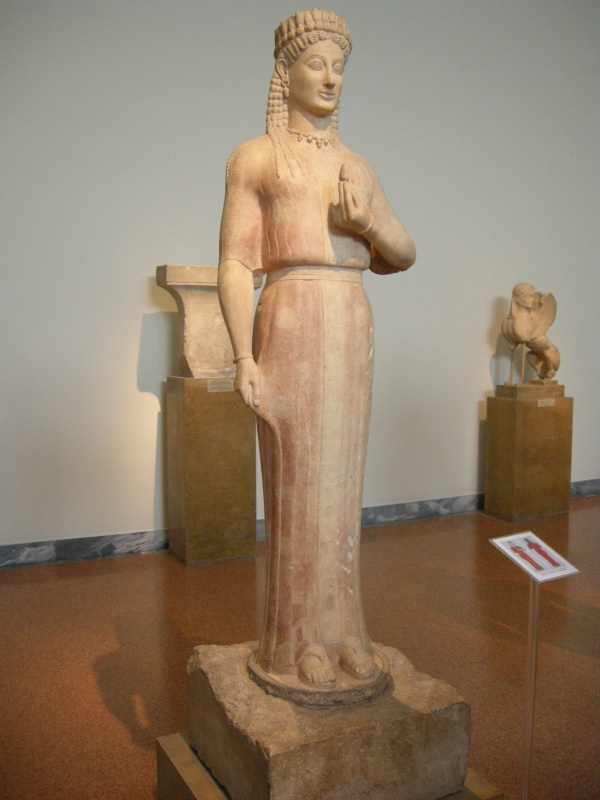Facts About Phrasikleia Kore
The Phrasikleia Kore is an exquisite funerary statue from ancient Greece, created by Aristion of Paros between 550 and 530 BCE. Unearthed in Myrrhinous, Attica, in 1972, this remarkable artifact is celebrated for its exceptional state of preservation and vibrant original colors. It stands out as a prime example of Archaic Greek art, particularly among the well-preserved 6th-century BCE statues known as Attic korai, which were specifically designed for funerary purposes.
The name "Phrasikleia" derives from the Greek word "kléos" meaning 'fame.' This name is fitting as the statue belonged to the Alcmaeonid family, who often chose names associated with renown. The statue's excellent condition is partly due to its burial in a custom-made pit, possibly a precaution linked to the political tensions of the time involving the tyrant Peisistratus and the Alcmaeonid family.
Inscriptions found near the statue helped identify Aristion of Paros as the artist behind this masterpiece. Today, the Phrasikleia Kore is housed in the National Archaeological Museum of Athens. Standing at 211 centimeters tall, the statue depicts a young maiden in a peplos, holding a lotus flower—a symbol of her unmarried status and indicative of the statue’s funerary purpose.
Advanced restoration techniques have revitalized the statue's original polychromy, showcasing intricate details and rich symbolism, including floral motifs and Egyptian funerary symbols. The restoration process employed eleven different pigments, including gold and lead foil appliqués, to recreate the vibrant colors and fine details that would have been seen in the 6th century BCE.
The Phrasikleia Kore primarily served as a grave marker for an unmarried girl. Its restored colors and details allow modern viewers to fully appreciate the artistic skill and cultural significance of this ancient work, just as it would have appeared to the people of ancient Greece.

 Turkey
Turkey